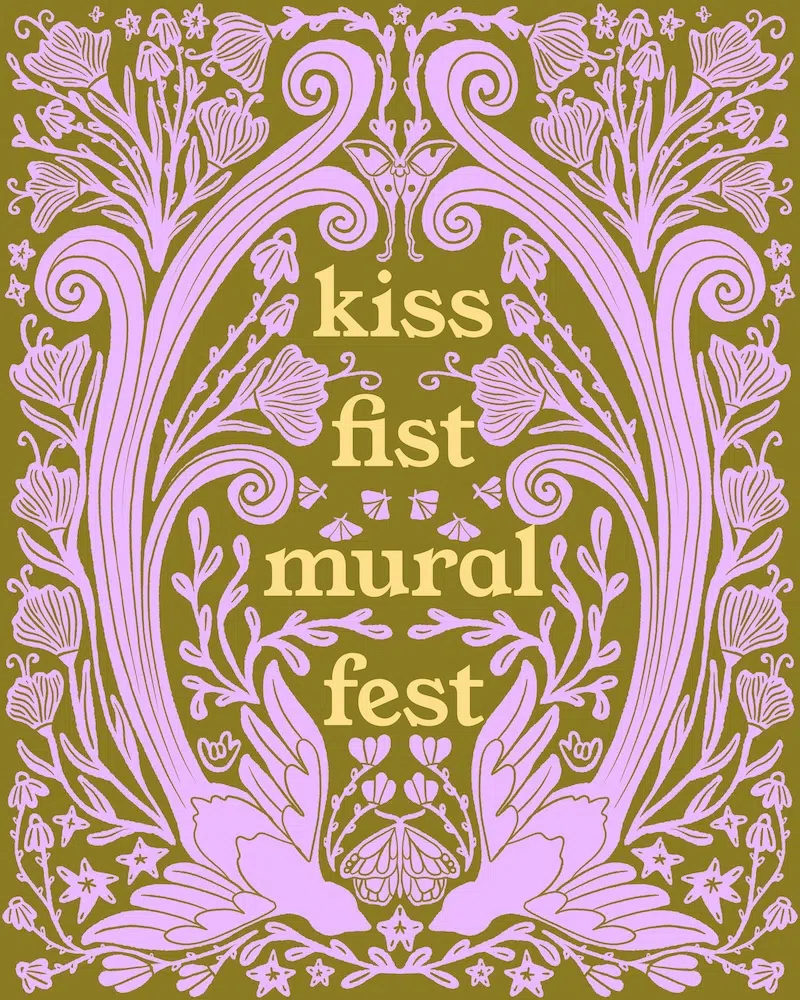
While attending mural festivals over the years, artist Kate Fitzpatrick had an idea of her own: start a similar event dedicated to the deaf community.
As a mural artist and child of deaf adults (CODA) herself, Fitzpatrick has recently become determined to curate a space predicated not on isolation but on connectivity. Historically, Fitzpatrick explains, audism has deprived the deaf community of experiences lacking accessibility or inclusion measures. Given that deaf people also don’t communicate through a spoken language, there is a pervasive misunderstanding that the community is plagued by isolation and solitude as well.
It should go without saying that the opposite is true. Deaf culture is rich, vibrant, and, as Fitzpatrick says, it “deserves to thrive in every way possible.” Her mural festival seeks to accomplish just that.
Slated to take place at the RiNo ArtPark in Denver, Colorado, this October, the KissFist Mural Fest intends to provide a critical venue through which to celebrate deaf culture and its rich heritage. The event will unfold across three days, and will involve a minimum of 10 mural artists, an art market hosted by Deaf Artisan Market Day, and Visual Vernacular (VV) performances, among other festivities.
My Modern Met had the chance to speak with Fitzpatrick and learn more about KissFist, deaf culture, and the growing efforts to combat inaccessibility. Read on for our exclusive interview with the artist.
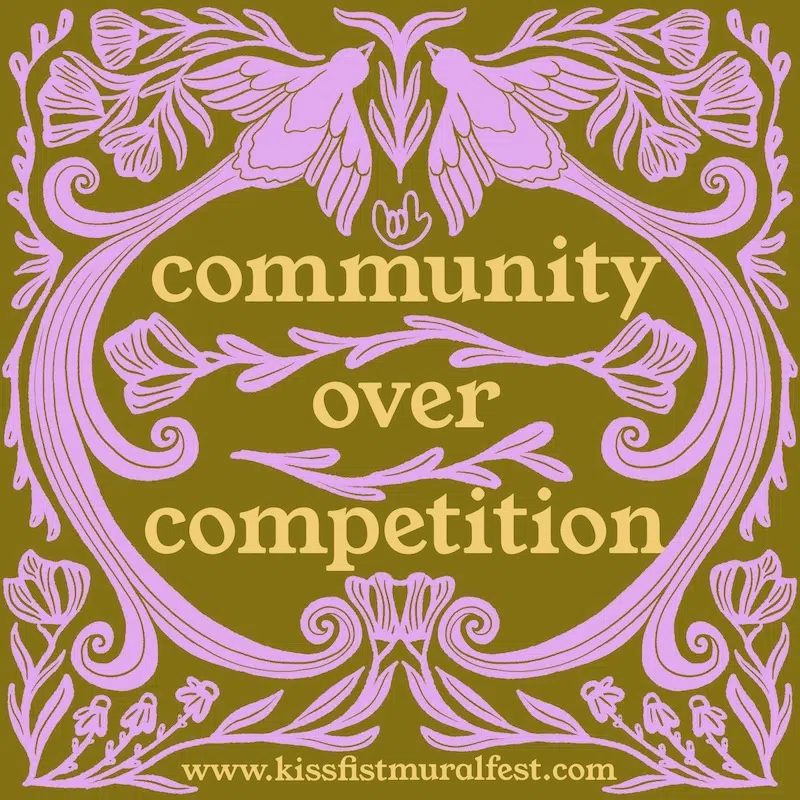
What originally inspired you to launch the KissFist Festival, and what is the meaning behind its name?
I am a CODA (child of deaf adults) and grew up in the deaf community. I am also a mural artist who has participated in several mural festivals over the years and it was at one of those where the idea for KissFist Mural Fest was sparked.
At the end of this festival, there was an awards ceremony which was presented in spoken English. My family was with me and as there was no interpreter present, my partner (also a CODA) stepped in and interpreted the event for my deaf family. This is certainly not the first time something like this has happened, nor will it be the last, but something about this particular time just made me tired. I wanted to be at a mural fest where deaf culture was centered. I wanted to be around artists who were deaf, deaf blind, hard of hearing, and CODA. I thought that would be incredibly fun. That’s where the idea for the KissFist Mural Fest began.
“Kiss fist” is an ASL sign. The meaning is best explained by my dad, Dan, in this Instagram video.
View this post on Instagram
What drew you to murals as the festival’s central focus?
There is something about murals that I find so affirming of our humanity. Murals are big, painting them is a messy business, they are imperfect and beautiful. When I see a mural, I can see the artist’s hand in it. In the age of AI, I think that is more important than ever.
Murals are also art for everyone. They are out there on the streets, hidden in alleyways and unexpected corners of towns and cities. Art galleries and museums can be intimidating, whereas murals are free to see, approach, and even touch. Also from an artist perspective, it’s just really fun to paint something big!
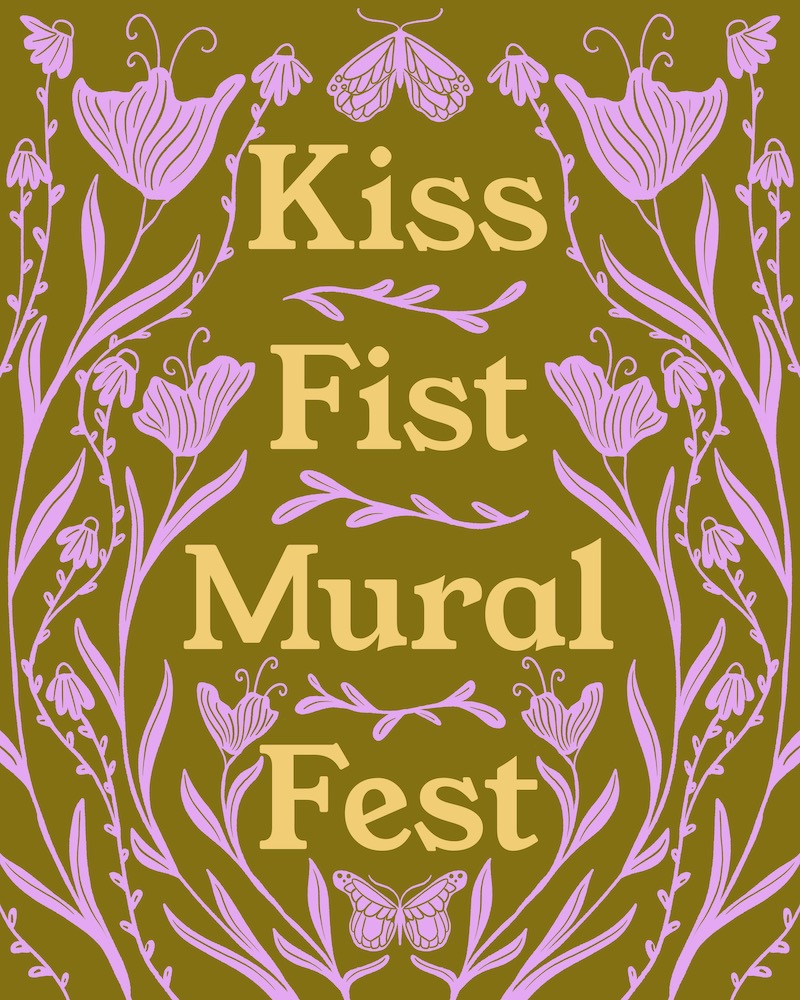
View this post on Instagram
How do you imagine the festival unfolding? What events will it feature, and how will artists participate?
The KissFist Mural Fest will take place over three days at the RiNo ArtPark in Denver, Colorado.
Our goal is to have a minimum of 10 mural artists, each painting their own 4 x 8 foot mural which will then be auctioned off, with the proceeds from the mural sales being split between the artist and the festival.
It’s also important to note that this festival is not a competition. All artists will be paid an equal stipend for their mural, and that stipend is separate from any proceeds of their mural sale. Being an artist has enough financial unpredictability—we don’t want this festival to add to that!
Alongside the mural painting, we will have an art market hosted by Deaf Artisan Market Day. We are also seeking deaf performance artists to do Visual Vernacular (VV) storytelling, which is an art form created by the deaf community.
And, of course, we will have food and beverages! This festival is meant to be a fun and joyful celebration of art and community. The KissFist Mural Fest centers deaf culture, specifically focused on the arts, but it is open to people from all backgrounds. We want folks to come hang out, browse art, meet mural artists, and have a good time. It’s important to us that the festival is free to attend and family friendly, too. This is really meant to be a space to build a stronger community for everyone.
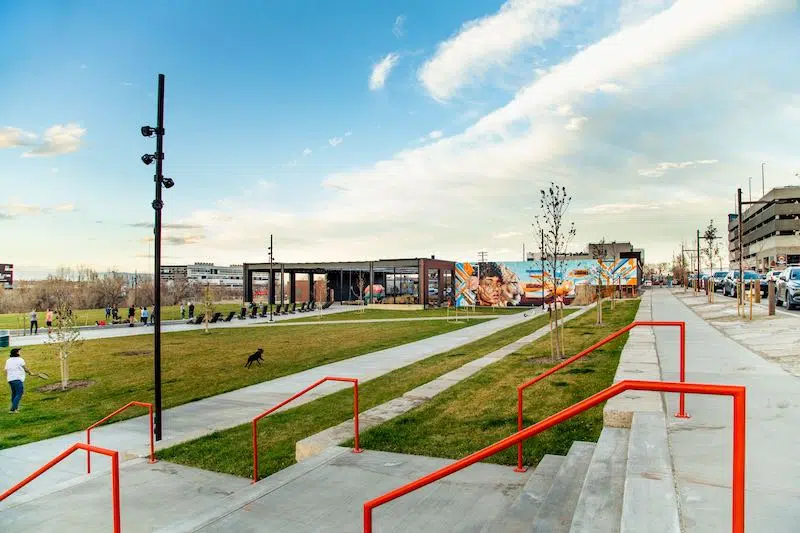
RiNo ArtPark in Denver, CO.
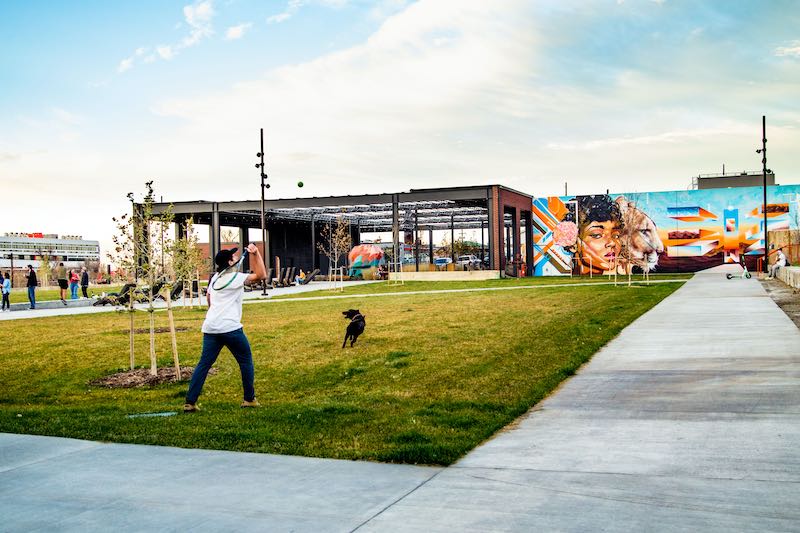
RiNo ArtPark in Denver, CO.
Why did it feel significant for you to create a dedicated festival for deaf artists and members of the deaf community?
There is a pervasive history of experience deprivation and isolation in the deaf community due to audism. There’s a term in the deaf community known as “dinner table syndrome.” Many deaf people grow up in predominately hearing spaces with hearing families that do not learn sign language. At the dinner table, for instance, the deaf family member is isolated from the conversation and connections that the hearing family members are having.
Creating the KissFist Mural Fest is significant because it is designed to be a place of connection, not isolation. It is part of a larger, existing movement for social change that is dedicated to embracing disability and creating accessible spaces where people can gather and build community.
Something my mom always said to my sisters and me when we were growing up was that being deaf was not something to be fixed. It was always something to be celebrated. Deaf culture is so diverse and rich, and it deserves to thrive in every way possible. Hopefully, the KissFist Mural Fest can be a part of that.
View this post on Instagram
What does accessibility mean throughout art? What does it mean for you personally and for your artistic practice?
Accessibility is not a one-size-fits-all situation, nor is it a finish line that we arrive at and then sit back and relax. It’s an ever evolving practice. I think that in the art world specifically, it means everything from captioning video content and providing ASL interpreters to offering free entry to art events or eliminating application fees for artists when applying for opportunities. It means asking artists what they need and then implementing it.
For me personally, accessibility means constantly analyzing the spaces I find myself in and asking, who is welcome here? For instance, I don’t think murals are inherently accessible for people with mobility aids or chronic illness. The ground beneath a surface is often uneven. There is a lot of reaching and contorting of oneself in order to reach a spot on a wall. Mural festivals are often high intensity, with short timeframes to complete a mural in. That requires long hours and lots of physicality which is not something available to everyone. So then the question becomes, how do we evolve that? How do we open up this art form to make it more accessible? We need to think about that and then actually put the answers into practice.
View this post on Instagram
What do you hope people will take away from the KissFist Festival?
The core of the festival is community, so I hope people leave the festival feeling enriched in that way. I hope people make new connections and strengthen existing ones.
In Colorado, there is a growing deaf community but it is a bit spread out. We chose the RiNo ArtPark location for the festival with that in mind, since it is fairly central. Our hope is that the festival offers a space for the pockets of the deaf community to converge.
For the artists, I hope they walk away feeling supported and uplifted. So much of being an artist involves working alone and questioning all of your choices. Having a chance to show your work in front of people and be celebrated for it is really affirming.
For people who are not part of the deaf community, I hope the festival gives them a glimpse into the richness of deaf culture through art, language, and storytelling. And I hope that they will discover new artists to support. A common issue in the deaf community is the way our culture and language (particularly the “I Love You” hand shape) are taken by folks who are not part of the community and used for profit. Supporting the KissFist Mural Fest and shopping the festival’s Deaf Artisan Market are a way to ensure that you are directly supporting artists from the deaf community.
View this post on Instagram
What are your next steps in preparing for the festival? How can people support the project?
Our biggest priority right now is to meet our fundraising goal so that we can make this festival the best it can be. As a brand new event in our first year, we are not eligible for as many grants as we will be in future years, so individual donations are incredibly impactful to us.
Sometimes people feel like if they can’t donate a large amount, it’s not worth it, and that is so not true. $5 donations add up fast! You can donate via our fundraiser.
Another way to support us is by sharing the info about the festival, whether it is this article or the KissFist Mural Fest website and social media. If you are a member of the deaf community who is interested in being involved, or a corporate sponsor who would like to work with us, please feel free to reach out to me at [email protected]!
KissFist: Website | Instagram | Fundraiser
My Modern Met received permission to feature images by Kate Fitzpatrick.
Related Articles:
Inspiring Pair of Deaf Climbers Complete Historic Climb of Mount Everest
Colorful Geometric Street Art Murals Celebrate the Vibrancy of the Human Spirit [Interview]
Street Artist Captures Souls Within Large-Scale Eye Murals During Miami Art Week [Interview]
